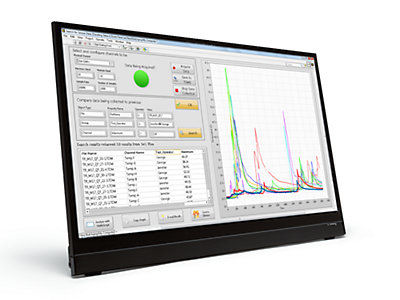Editor’s Pick: LabVIEW 2014 Released

LabVIEW 2014 software adds new capabilities to acquire, analyze and visualize data from anywhere at any time. Image courtesy of National Instruments.
Latest News
August 6, 2014
 Dear Desktop Engineering Reader:
Dear Desktop Engineering Reader:
 A ton of stuff is going on here in Austin, Texas, at the 20th annual NIWeek conference put on by National Instruments. As is customary, NI released the latest version of its flagship LabVIEW graphical system design software for measurement or control systems. But before we get to that, here’s a quick look at some of the other major announcements coming from NI this week.
A ton of stuff is going on here in Austin, Texas, at the 20th annual NIWeek conference put on by National Instruments. As is customary, NI released the latest version of its flagship LabVIEW graphical system design software for measurement or control systems. But before we get to that, here’s a quick look at some of the other major announcements coming from NI this week.
NI has announced its new NI Semiconductor Test System (STS) series of PXI-based automated test systems, which should reduce the costs of testing RF (radio frequency) and mixed-signal devices by opening access to NI- and industry-offered PXI modules in semiconductor production test environments. The STS line has an open, modular architecture that will enable engineers to keep up with fast-changing semiconductor technologies. Features include a customizable operator interface, handler/prober integration, device-centric programming with pin-channel mapping, standard test data format reporting and integrated multisite support.
Also among the slew of products NI revealed is a new member of NI’s CompactDAQ platform family, the CompactDAQ 4-slot controller. This rugged form factor unit integrates an Intel Atom dual-core processor, signal conditioning and I/O into a single system, which should enable engineers to reduce overall system cost and complexity while increasing measurement accuracy simultaneously. Features include an integrated CAN/LIN port, 32GB removable storage, 2GB Ethernet and support for Windows Embedded 7 or NI Linux Real-Time operating systems.
Now on to LabVIEW. Version 2014 is built around a number of upgrades intended to help you quickly acquire, analyze and visualize data sets to make informed decisions. Among these features is a technology called DataFinder Federation. This technology provides a methodology for quickly searching for, acquiring and analyzing data across a local drive, network or anywhere in the world you have it.
Related to DataFinder is a new Data Dashboard for LabVIEW. This feature lets users create secure mobile interfaces for visualizing acquired data without the expertise of a mobile developer and enables you to make informed decisions wherever you and your iOS or Android device happen to be.
LabVIEW 2014 offers new built-in algorithms for a richer deployment of analysis including .m files to NI Linux Real-Time and vision functions to FPGAs (field-programmable gate arrays). In total, LabVIEW offers 13 new user-driven features to optimize coding productivity, including a smarter FOR loop and quick-drop auto-wiring of VIs (virtual instruments).
Among the new tools on the LabVIEW Tools Network is the LabSocket System developed by an outfit called Bergmans Mechatronics LLC in Newport Beach, CA. What the LabSocket System does for you is provide remote access to LabVIEW applications from desktop or mobile web browsers without requiring browser plug-ins or a client-side run-time engine.
You can read more about LabVIEW 2014 from today’s Pick of the Week write-up. Make sure to hit the link at the end of the main write-up to go to the “What’s New in LabVIEW 2014” landing page. You’ll find four videos there covering new features for embedded monitoring and control systems, automated test systems and acquiring signals.
Thanks, Pal. — Lockwood
Anthony J. Lockwood
Editor at Large, Desktop Engineering
Read today’s pick of the week write-up.
This is sponsored content. Click here to see how it works.
Subscribe to our FREE magazine, FREE email newsletters or both!
Latest News
About the Author
Anthony J. Lockwood is Digital Engineering’s founding editor. He is now retired. Contact him via [email protected].
Follow DE





